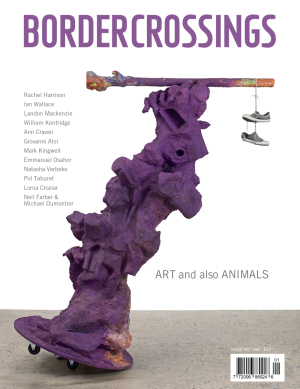Willem de Kooning: Women on the Themes of Painting - Conversations with Cecily Brown, April Gornik,
In 1953 at his opening at the Sidney Janis Gallery in New York, Willem de Kooning was approached by Jackson Pollock, who was in an especially combative mood. It was de Kooning’s third solo show at the gallery, and it included Woman I through V, as well as Woman with Bicycle, the body of work that would make him even more famous than he already was, and that would change modern art. “Bill, you betrayed it,” Pollack accused. In Pollock’s formulation, the “it” was the grand experiment in abstract painting on which their generation had embarked, and the instrument of its betrayal was the figure. “You’re still doing the same goddamned thing,” Pollock complained. “You know, you never got out of being a figurative painter.”
De Kooning’s response is not documented, but it must have been less physical than the fistfight that ensued with Clement Greenberg eight years later. At a lecture in late October, 1961, Greenberg had repeated his claim that de Kooning was a better painter before 1950 than he had been ever since. A month later at Dillon’s, a bar near the Cedar Tavern, de Kooning’s response added clout to the cliché that actions speak louder than words.
These anecdotes are not apocryphal; they are recorded incidents in the story of how modern art settled in to the United States. Both say something about the intensity of the time, the fierce partisanship that characterized it, and how much was at stake in being a painter when Modernism was taking hold in America.
From September 18, 2011 to January 9, 2012 at the Museum of Modern Art in New York, the art world had an opportunity to see “de Kooning: A Retrospective,” an exhibition of 200 works spanning seven decades, curated by John Elderfield, MoMA’s Chief Curator Emeritus of Painting and Sculpture. It was a unique opportunity to engage the full range of de Kooning’s painting, drawing and sculpture. The exhibition was accompanied by an indispensable, 500-page-long catalogue that is now the gold standard for de Kooning criticism. Mr. Elderfield’s introductory essay, called “Space to Paint,” is exemplary, and the argument he makes for de Kooning’s invention of a new pictorial space is compelling and persuasive. De Kooning’s art was the subject of considerable attention while he was alive, and its hold on the aesthetic imagination has not diminished in the 15 years since his death. “De Kooning: A Retrospective” has made the discussion of the quality and influence of his work even more pertinent than it was before.
When the painter and critic Fairfield Porter reviewed, in The Nation, de Kooning’s 1959 exhibition of 22 paintings at the Sidney Janis Gallery he praised the show (which included a number of the abstract parkway landscapes) by saying that “it is as though his painting reached a different level of consciousness than painting that refers to a theory of aesthetics.” In continuing his praise, he says the work goes beyond “any painting that has been extensively verbalized.”
Border Crossings wants to pick up on verbalization in the form of three extensive conversations with contemporary painters. We asked Cecily Brown, April Gornik and Monica Tap to see the exhibition and to discuss the aesthetic, historical and personal issues that emerged from that encounter. The responses of these three exceptional and very different painters (whose combined practices encompass abstraction, figuration and landscape) were unpredictable. The following conversations are as full of surprises as was the exhibition and its rambunctious art.
Cecily Brown was born in London, England and now lives in New York. She has had numerous one-person exhibitions in museums in the U.S. and Europe and is represented by the Gagosian Gallery.
April Gornik was born in Cleveland, Ohio and now lives in North Haven, Long Island and New York. She shows with Danese Gallery in New York and has been included in a number of one-person and group exhibitions in the U.S. and abroad.
Monica Tap was born in Edmonton, Alberta and now lives in Toronto. She shows with Wynick/Tuck Gallery in Toronto and has been included in a number of one-person and group shows in Canada and Europe. She teaches painting in the School of Fine Art and Music at the University of Guelph.
The exhibition at the Sidney Janis Gallery that Pollock found so treacherous was called “Paintings on the Theme of the Woman.” We have reversed the order of that naming for our three-part conversation. It is called “Willem de Kooning: Women on the Themes of the Paintings.” As April Gornik remarks in another context, it is a title that de Kooning might well have thought droll.
To read the full interview, pick up issue 121, on newsstands now - or click here to subscribe.
Above image: Willem de Kooning, *Clam Diggers, 1963, oil on paper on composition board, 20.25 x 14.5”. Private collection, New York. © 2012 The Willem de Kooning Foundation/Artists Rights Society (ARS), New York.*
Conversation with Cecily Brown Conversation with April Gornik Conversation with Monica Tap

